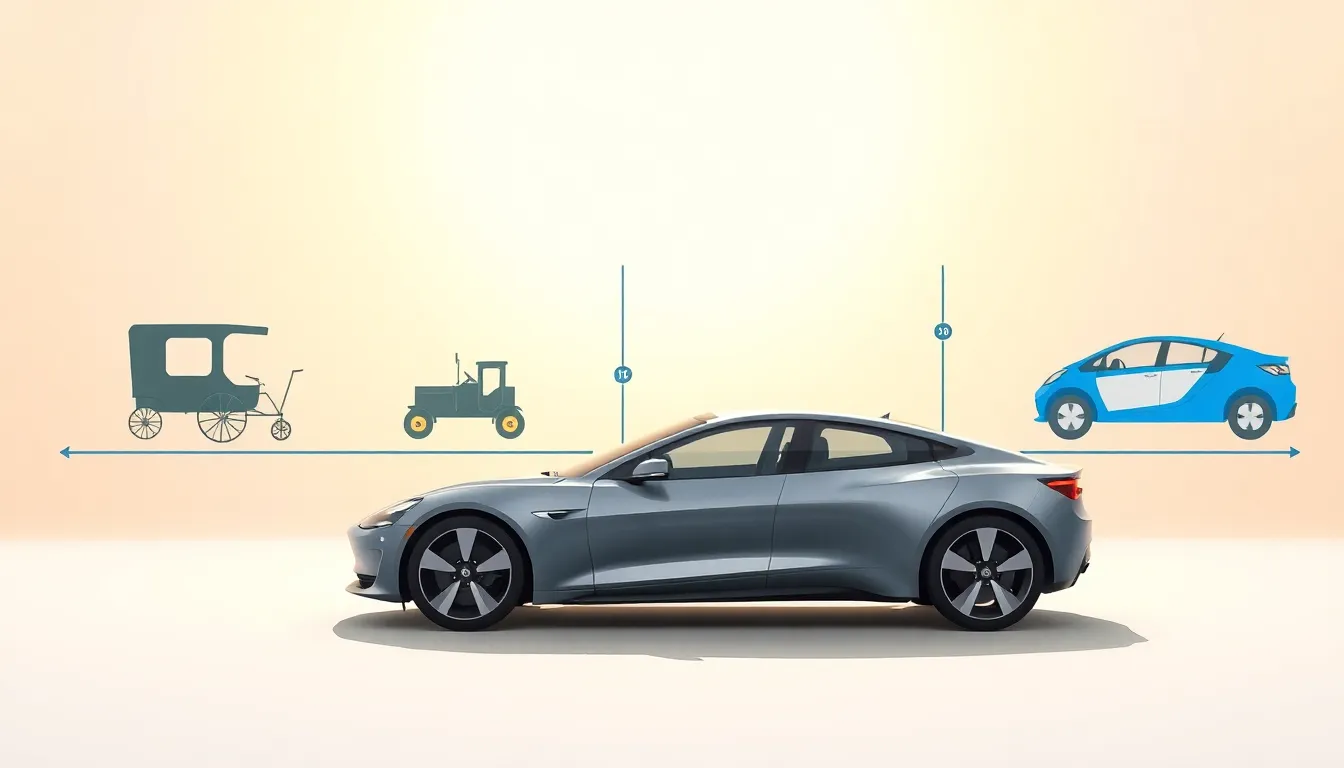If you think electric vehicles (EVs) are just a fad, you might want to charge your thinking. The evolution of electric vehicles is a fascinating journey that sparks interest in both technology and sustainability. From their early inception over a century ago to their prominent role in today’s automotive market, EVs have come a long way. Let’s jump into this electrifying story of innovation, challenges, and future potential.
Table of Contents
ToggleHistorical Background Of Electric Vehicles

Early Development And Milestones
The story of electric vehicles isn’t as recent as one might assume. In fact, the earliest electric cars were developed in the 1830s. Innovators like Robert Anderson built some of the first crude electric carriages, setting the stage for what would eventually bloom into a market of sustainable transportation. By the late 19th century, electric vehicles became increasingly popular, particularly in urban areas.
Fast forward to the early 20th century: notable milestones included Thomas Parker’s electric vehicle, which operated in London in 1888, and the introduction of the Baker Electric Car by Baker Motor Vehicle Company in 1900. They offered a quiet and clean alternative to those noisy gasoline-powered vehicles. But, the rise of gasoline engines, coupled with mass production techniques from companies like Ford, pushed electric vehicles into the shadows.
The Rise Of Electric Vehicles In The 20th Century
Even though facing setbacks, electric cars still had their moments in the spotlight in the latter half of the 20th century. The 1970s oil crisis sparked renewed interest in alternative fuel sources. Enter the development of the EV1 by General Motors in the 1990s, which marked a significant revival of interest in electric vehicles. Though the EV1 was short-lived due to various corporate decisions, it planted seeds of innovation that would eventually lead to today’s electric vehicles.
Technological Innovations Driving Changes
Battery Technology Advancements
When discussing the evolution of electric vehicles, one cannot overlook the impact of battery technology. Nickel-cadmium batteries paved the way, but lithium-ion batteries are the real game-changers. This shift has allowed EVs to travel further on a single charge, pushing the envelope of what electric vehicles can achieve. Modern EVs are boasting ranges of over 300 miles, an impressive feat that has consumers rethinking their driving choices.
Charging Infrastructure Development
A robust charging infrastructure is like the backbone for electric vehicles’ growth. In the early days of EVs, charging stations were as rare as a four-leaf clover. But, today, public charging stations are rapidly expanding across cities and highways, with charging times decreasing significantly thanks to quick and fast chargers. Innovations such as charging stations powered by renewable energy make EV ownership not just practical but also environmentally responsible.
Government Policies And Incentives
Global Initiatives And Regulations
Governments worldwide have recognized the importance of electric vehicles in combatting climate change. Policies like California’s Zero Emission Vehicle (ZEV) mandate and similar initiatives across Europe push automakers to increase their EV offerings. Notably, countries like Norway have already transitioned to electric vehicles at an astounding rate due in part to hefty government support.
Impact Of Incentives On Adoption Rates
Incentives play a significant role in making electric vehicles financially appealing to consumers. Tax credits, rebates, and reduced registration fees create a more enticing environment for purchase. Such initiatives can drastically reduce the cost of an EV, making them more accessible for the average consumer. More people recognizing the financial and environmental benefits means stronger adoption rates.
Current Trends In Electric Vehicle Adoption
Market Growth And Consumer Preferences
The electric vehicle market is on fire, growth rates have surged in the past few years, aligning with changing consumer preferences. A recent survey indicated that nearly 60% of consumers are considering making their next vehicle an electric one. Trends suggest that interest is fueled by a combination of environmental concerns and the decreasing cost of EVs over time.
Challenges Facing The Electric Vehicle Market
Even though this positive momentum, the electric vehicle market does face challenges. Supply chain issues have been a topic of discussion, with battery shortages looming over production schedules. Other hurdles include misconceptions about range anxiety and relatively higher upfront costs. These challenges must be addressed for this momentum to sustain.
The Future Outlook For Electric Vehicles
Predicted Technological Advances
Looking ahead, the future of electric vehicles promises thrilling advancements. Predictions suggest breakthroughs in solid-state battery technology could further extend range and reduce charging times. Autonomous driving technology could revolutionize the landscape, ushering in an era of smart electric vehicles that can navigate complex traffic systems with ease.
Sustainability And Environmental Impact
One thing is clear: the future of electric vehicles is linked intrinsically to sustainability. As the world grapples with climate change, electric vehicles offer a cleaner alternative, especially as energy sources shift toward renewables. An increased focus on sustainability, not just in manufacturing but in the entire lifecycle of the vehicle, will further solidify EVs’ place in modern society.






